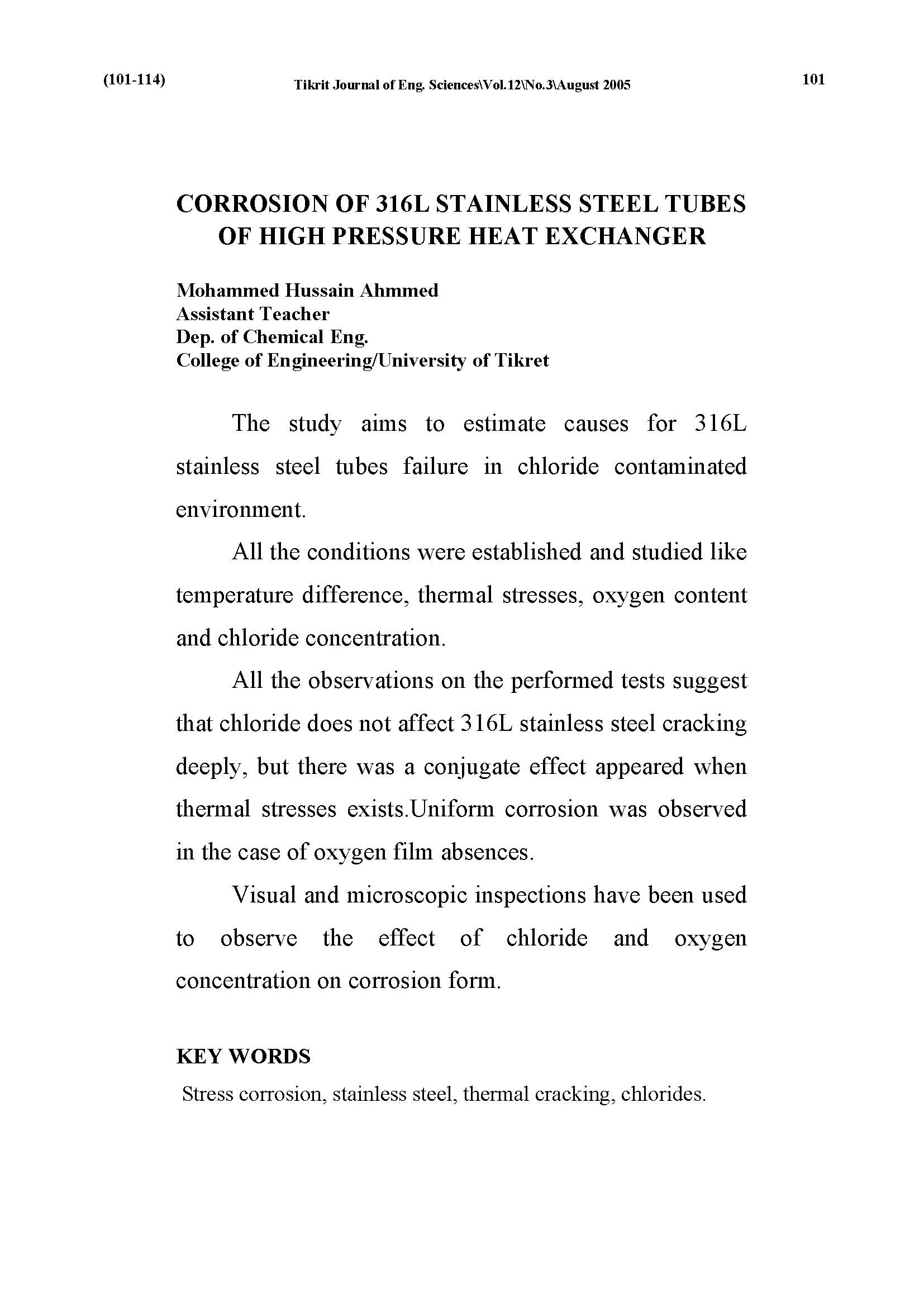Corrosion of 316L Stainless Steel Tubes of High Pressure Heat Exchanger
Main Article Content
Abstract
The study aims to estimate causes for 316L stainless steel tubes failure in chloride contaminated environment. All the conditions were established and studied like temperature difference, thermal stresses, oxygen content and chloride concentration. All the observations on the performed tests suggest that chloride does not affect 316L stainless steel cracking deeply, but there was a conjugate effect appeared when thermal stresses exists.Uniform corrosion was observed in the case of oxygen film absences. Visual and microscopic inspections have been used to observe the effect of chloride and oxygen concentration on corrosion form.
Metrics
Article Details

This work is licensed under a Creative Commons Attribution 4.0 International License.
THIS IS AN OPEN ACCESS ARTICLE UNDER THE CC BY LICENSE http://creativecommons.org/licenses/by/4.0/
Plaudit
References
O’Brien Corporation “Chloride Stress Corrosion Cracking in Tube Bundles” · St. Louis, Missouri Page 1, Technical Release, 2000.
M.G.Fontana, “Corrosion Engineering” 3rd edition, Copyright 1986 by Mc-Graw-Hill Book Company.
Sackinger, William “Cause an prevention of Corrosion” , 1980 , Program Marine Advisory Bulletin 10-15 pp.
Tao N. J., Pan J., Li Y., Oden P. I., DeRose J. A., Lindsay S. M., Surf Sci, 1992, 272, L338. DOI: https://doi.org/10.1016/0039-6028(92)90855-Z
Ulig, H.H., Corrosion and Corrosion Control”, pp 37, 42, 44, 102. (1971), John Wily & Sons Inc.
Jones, Denny A. Principles in Galvanic Corrosion, 2nd Ed, Upper Saddle River, NJ: Prentice Hall 1996, Chapter 5 and 6, pp. 168 –198 Prevention of corrosion.
Dr. Russell D. Kane, “Corrosion monitoring for industrial and process applications”, International Corrosion Inc, January 2003.
Steferston H. Dery, “Corrosion monitoring of stainless steel: high grade”, Inspection Journal, February 2001.
Michael K. Poindexter, Peter K. Kilpatrick and Daniel H. Emmons, Energy & Fuels 2002, 16, 700-710. DOI: https://doi.org/10.1021/ef010224i
W. Furbeth, M. Stratmann, Corros. Sci. 43 (2001) 207. DOI: https://doi.org/10.1016/S0010-938X(00)00047-0





